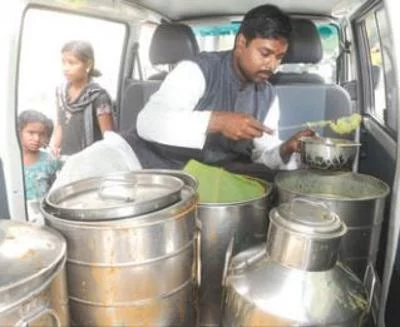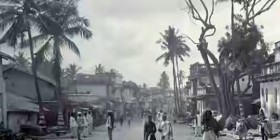The nondescript village of Kempapura in Magadi taluk, 75km from Bengaluru, holds a secret close to its heart. Of a curse which did not allow its people to talk about Kempegowda, the founder of IT City, for five centuries.
His memorial lay in Kempapura, a hamlet of 60 houses and a population of around 500, with a plaque dating back to the 16th century , yet no one mentioned it. A narrow muddy path leads to the memorial.The secret is strange: Legend has it that the villagers would not utter the lines on the memorial, “Hiriya Kempegowdaru Kunigalninda bandu e baliye jagala madi, ikyragi kailsakke hoda sthala (Senior Kempegowda who traversed from Kunigal, fought in a battle in this place and travelled to heaven after a heroic death),” for they believed that all those who uttered it would die or their heads would split.The fear is palpable even today.
Last week, a committee of historians confirmed that the memorial was indeed the spot where Kempegowda breathed his last in a battle that took place between 1568 to 1608, and the world heard about Bengaluru’s founder and his last days.Immadi Kempegowda, the son and successor of Hiriya Kempegowda, built the memorial in his father’s memory and also constructed a tiny Basava temple just opposite the memorial. The speciality of this temple is that Basava sits on Shivalinga, which is uncommon in Hindu mythology .Respect for their beloved king lived on: every Monday, the villagers of Kempapura offered prayers and arati, and the practice continued till the 17th century . “Hyder Ali and his army was passing through the village, and fearing he would destroy the memorial, locals decided to cover it with shrubs and bushes. For some reason, Hyder Ali camped near Magadi for quite a long time and the villagers stopped approaching the memorial,” recall village veterans. The fear continued even after the death of Hyder Ali.
Fear of Tipu Sultan or other invaders harming the memorial drove villagers to permanently cover it and they allowed bushes and shrubs to grow on it,” says Chingamma Nanjappa Gowda, 105, the oldest person in the village. Chingamma recalls how the Mysore Maharaja and chieftains often visited the memorial when she was a child. “Later, these visits stopped. I remember my parents narrating stories of heads splitting, that stopped us from venturing near the memorial,” she explained, adding, “Villagers would have a moonlit dinner near the Veera Samadhi.”Folk songs and short plays were commonly held near the memorial in the early 18th century. Composed in Nadu-Kannada dialect, ancestors would sing lavanis on the Kempegowda dynasty, their heroic acts and sacrifices, recalls Kempapura’s villagers. While the veterans continue with agriculture, the young work in Bengaluru. Ragi is the main produce with silk cocoons as the second.





Leave a reply